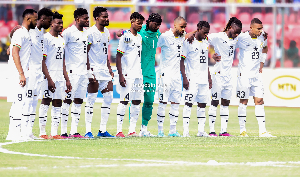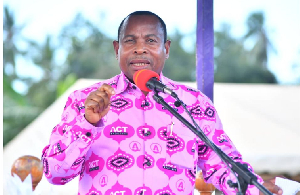To promote transparency and reduce all corruption risks associated with the awarding of mining licenses and permits, face-to-face processing must be replaced with digitisation, a new report by Ghana Integrity Initiative (GII), the local chapter of Transparency International, has recommended.
Titled ‘Corruption Risk Assessment Report on Mineral Mining Licensing in Ghana’, the report said manual processing of applications exposes both the applicants and public officials to potential corruption, hence, it should be substituted with an electronic system of application to minimise or eliminate the risk.
“The digitisation is not only consistent with national policy but also eliminate the incentives for corrupt practices associated with the face-to-face manual processing of mining license application. The efficiency with the digitisation of the application process provides opportunity for the Minerals Commission to deploy the expertise of staff at the Minerals Title Department for other equally important assignments,” the report said.
Mining is an important economic activity in the country contributing an estimated 6 percent to Gross Domestic Product, 26 percent to government revenue, and 40 percent to total merchandise export earnings over the last 10 years.
However, the report adds, despite the great potential of the sector, its contribution towards the national economy and sustainable development as a whole has fallen below expectation over the years. Poor mineral sector governance and corrupt practices along the value chain have been noted as key obstacle to the performance of the mining sector.
“The license application and processing procedures is one of the areas in which the risks and vulnerabilities to corruption in the mining value-chain occurs. Therefore, identifying and eliminating these risks and vulnerabilities is an important effort towards enhancing the contribution of mining to the national economy and sustainable development in general,” it said.
Recommendations made by the report in relation to reducing licencing corruption risk, include, the Minister of Mines and the Minerals Commission putting in place an effective, efficient, meaningful and sustained mechanism of stakeholder engagement and consultation to empower stakeholders and communities to engage in the mining license application process; and full public disclosure of licensed areas for reconnaissance, prospecting and lease to promote transparency and accountability; minimize illegal encroachment of concessions and deter corrupt practices such as collusion between the renounced licensed-holders and Cadastral officials.
Others are timely ratification of signed mining license agreements by Parliament, publication of notices in respect of the processing and granting of mining licenses in local languages and at locations, which are easily accessible to people in communities that host the concession, as well as, Minerals Commission should prepare and publish procedures for the prevention and management of conflict of interest.
The report also wants the Minerals Commission to develop and enforce a model stepwise approach for preventing and or minimising speculative activities.
This model, it says, should include an inventory of assets, publicity of timelines and cut-off dates within which activities cannot be considered for compensation.
The cut-off date should be considered in the negotiation of community agreements and the consultation process.
The report expressed optimism that, the aforementioned recommendations, among other industry standard practices, if adopted, can increase the sector’s contribution towards national development, particularly employment creation which currently stands at about 28,000 jobs for the large-scale sector, and over one million direct and indirect jobs for the small-scale sector.
The study forms part of the Accountable Mining Programme (AMP), an initiative that focuses on promoting sustainable development through mining. The aim of the programme is to identify and address weaknesses in the mining sector governance framework by working with key stakeholders to bring about policy and practice change.
It was conducted within the framework of the Mining Award Corruption Risk Assessment (MACRA), which is based on the premise that lack of transparency and accountability in the awarding of mining sector licences, permits and contracts – the first stage in the mining value chain – is a root cause of corruption in the sector.
Mining contribution
The mining sector’s total fiscal contribution in 2019 was 7.7 percent of domestic revenue, second highest contributor behind the financial and insurance sectors.
Overall, the share of the mining and quarrying sector in total direct domestic receipts mobilised by the Ghana Revenue Authority improved by 70 per cent from GH¢2.36 billion in 2018 to GH¢4.02 billion in 2019.
This growth was propelled by the increase in production and price of some minerals, particularly, gold in the year under review.
Business News of Friday, 12 June 2020
Source: thebftonline.com













